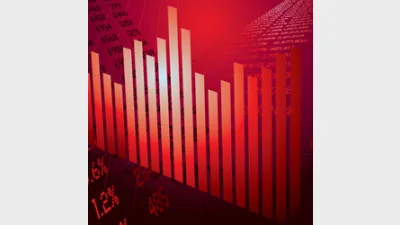Asian equities come of age



 Despite a wave of indiscriminate selling by Western investors, the fundamentals remain strong for Asian equities, writes Tim Stewart.
Despite a wave of indiscriminate selling by Western investors, the fundamentals remain strong for Asian equities, writes Tim Stewart.
Asian stock markets have taken a battering over the last few months along with rest of the global economy, and there could be worse to come if the sovereign debt issues in Europe remain unresolved.
Asian stocks are down 15 per cent year to date, with the Taiwanese market faring the worst – down almost 17 per cent since January.
But the short-term volatility in the Asian market belies the fact that companies are cashed up and in good financial shape, according to AMP Capital Asian equities co-head Ragu Sivanesarajah.
“The long-term fundamentals are still there. Asia has high savings rates and good demographics. Post the Asian currency crisis, a lot of the excesses that were in many of the countries are not there,” Sivanesarajah says.
Asia ex-Japan is trading at a price to earnings (PE) ratio of just under 10 times, says Sivanesarajah. However, he added that in an environment where earnings are uncertain, it is more accurate to assess valuations on a price-to-book basis.
Under this measure, Asia ex-Japan is trading at 1.5 times book value, making it about one standard deviation cheap, he says.
“It looks attractive from a valuations perspective, but if the global economy continues to deteriorate, it’s not at the bedrock valuations that we’ve seen in previous troughs,” Sivanesarajah says.
Premium China Funds Management head of distribution and operations Jonathan Wu agreed there could be a significant downside from here, unless a lasting solution to Europe’s sovereign debt woes is reached.
The recent carnage in Asian stock markets bears many similarities to the experience of 2008, with redemptions from US and UK hedge funds leading to indiscriminate selling, says Wu.
“Private investors from outside of Asia are pulling out money at an increasing rate. Funnily enough, it’s the fund managers based in Asia who are picking up the stocks that everyone else is dumping, because they’re so cheap,” he says.
The Asian market looks attractive on a price-to-book basis, but when there is forced selling in the market, the ‘P’ in PE ratios becomes meaningless, according to Wu.
“Some of the property developers we’re holding in China have just reported a 60-70 per cent increase in profit last month, and they’re trading at a PE of two. That just doesn’t make sense. How could the earnings of a company be earned back in two years?” he asks.
Premium China Fund reduced its short position from 10 per cent in August to 5 per cent in September, Wu says.
“Some stocks just got so ridiculously cheap. We don’t just look at the stock market valuation, we look at the physical valuation of companies,” he says.
Treading carefully
As strong as the fundamentals driving Asian equities may be, Australian investors are still reluctant to devote a significant portion of their portfolio to Asia, according to Sivanesarajah.
“I’m yet to see the big funds allocating directly to Asia. The clients we speak to are willing to allocate to global equities, but to actually directly allocate to Asia, that step is rare,” says Sivanesarajah.
There were signs that a big allocation to Asia was on the cards in 2003 – which would have been a great time to do it – but superannuation funds didn’t follow through, says Sivanesarajah.
Part of the reluctance may be down to the perception among Australian investors that Asian markets are still immature and lacking in sufficient market controls to make Asian stocks ‘investment grade’.
But great strides have been taken in improving the quality and quantity of disclosure, along with increased dialogue between investors and companies, according to Fidelity Asia Fund portfolio manager David Urquhart.
“Most of the Asian countries have already adopted international financial reporting standards, so the accounting standards are now the same as they are in Australia, and they’re consolidated accounts,” says Urquhart.
Standard & Poor’s director of fund services Paul O’Connor agrees that the Asian equities market is maturing, pointing in particular to fixed income. More and more Asian companies are now starting to raise debt via their own securities that they’re issuing into the marketplace, he says.
Corruption is no more a problem in Asian markets than in the rest of the world, O’Connor adds.
“Regulations on the Hong Kong stock exchange are as sound and as well managed in terms of listing rules of businesses as the ASX here in Australia,” O’Connor says.
The typical problem in China is a lack of understanding of the role of the shareholder, rather than any outright corporate fraud, he says.
“Most of the top businesses in China understand their responsibilities, and they’re also pretty strictly policed as well,” O’Connor adds.
Getting the numbers right
So how much of a portfolio should be allocated to Asian equities? For Wu, one-third of the total equities allocation in a portfolio should be invested in Asia.
Wu breaks tradition with most fund managers in Australia, and does not differentiate between ‘Australian equities’ and ‘global equities’.
“We don’t class Australian equities as a sector, because I find that ridiculous. Australian equities are part of a sector called ‘equities’. Equities for an accumulator are generally about 60-70 per cent, and I would say that you allocate one-third of that to Asia,” Wu says.
While he appreciates the ‘home bias’ effect, Wu objects to the hugely overweight position taken by local fund managers when it comes to Australian equities.
“Researchers are building models that are 40 per cent Australian equities – and I can’t see why. We represent 2 per cent of the entire world and we’re stocking up 40 per cent … If Australia was to go into a deep hole and a deep recession again, where are you running to?” he asks.
For O’Connor, if you strip Asian equities out of the broader emerging markets sector they can provide good diversifying benefits to a portfolio.
“Asia is less correlated to Australian equities because you are removing the resources of Africa, South Africa and Brazil, and gaining more of an exposure to exporters and the growing domestic economy [in Asia],” he says.
Recommended for you
The central bank has released its decision on the official cash rate following its November monetary policy meeting.
ASIC has cancelled the AFSL of a Melbourne-based managed investment scheme operator over a failure to pay industry levies and meet its statutory audit and financial reporting lodgement obligations.
Melbourne advice firm Hewison Private Wealth has marked four decades of service after making its start in 1985 as a “truly independent advice business” in a largely product-led market.
HLB Mann Judd Perth has announced its acquisition of a WA business advisory firm, growing its presence in the region, along with 10 appointments across the firm’s national network.











